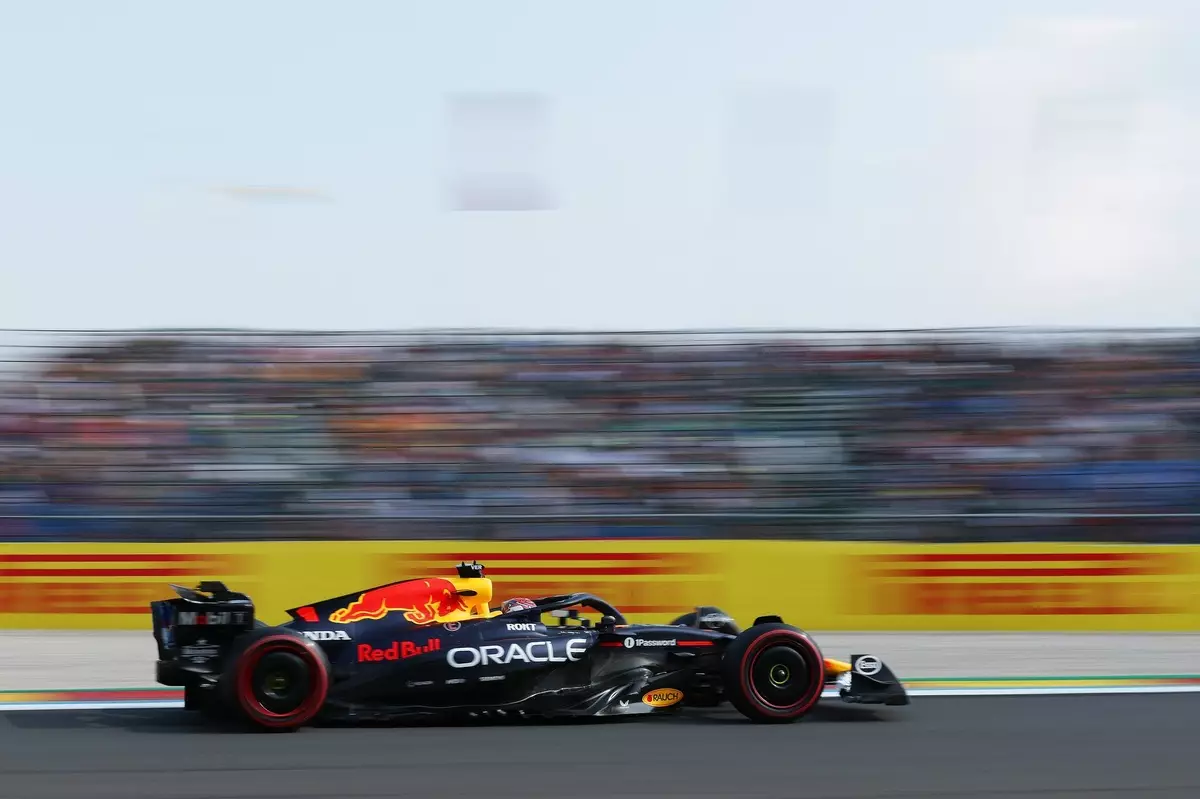In the fiercely competitive world of Formula 1, small margins define winners and losers. The recent Belgian Grand Prix sprint qualifying vividly illustrated how fractions of a second can dramatically influence the outcome. Max Verstappen, despite his undeniable talent and the formidable Red Bull machinery, found himself off the pace, conceding almost half a second to Oscar Piastri. This gap, particularly noticeable in the crucial second sector of the track, underscores the relentless push for perfection in F1—a sport where every thousandth of a second can mean the difference between pole position and a mid-grid start.
Verstappen’s struggles in sector two were not isolated; they epitomize the persistent challenge teams face in balancing downforce and top speed. While Red Bull’s focus on enhancing downforce in high-speed turns has paid dividends, the compromise has manifested in slower straight-line speeds. Despite recent upgrades, Verstappen’s top speed of 345.3 km/h lagged behind Piastri’s 341.4 km/h, a gap that, in the context of sheer lap times, still feels significant. Yet, it is vital to recognize that the underlying issue transcends raw numbers. The problem is a systemic struggle to find the ideal aerodynamic balance that can deliver both grip and velocity.
The Limitations of Upgrades and Strategic Dilemmas
Red Bull’s approach to improving performance highlights a critical dilemma faced by F1 teams: the delicate trade-off between increasing downforce and sacrificing straight-line speed. Helmut Marko’s insights reveal a calculated effort to push the envelope without compromising the car’s overall efficiency, but the results suggest that even with recent updates, they remain behind McLaren’s pace.
This ongoing struggle raises questions about the effectiveness of upgrade strategies relative to emerging competitors. Piastri’s impressive performance, despite having only just made it into Q3 after a penalty, indicates that McLaren’s chassis and aerodynamic concept might be edging ahead. Piastri’s ability to extract such performance from his machinery suggests a masterful combination of driver skill and strategic setup choices, setting a benchmark that Red Bull must now evaluate critically.
Furthermore, Verstappen’s comment about the minimal impact of straight-line speed differences underscores a philosophical debate in F1: is outright top speed the key, or is overall lap consistency and grip more advantageous? Historically, Red Bull’s strength was in perfecting high-downforce configs that excel in cornering, but as competition tightens, this advantage diminishes, forcing teams into difficult trade-offs.
Emerging Talents and the Unforgiving Nature of Qualifying
Meanwhile, the spotlight also turns to Yuki Tsunoda, who continues his streak of being outqualified by Verstappen. With every session, the margin widens, exposing the challenge of development and the importance of upgrade eligibility. Tsunoda’s inability to access the latest performance upgrade packages places him at a disadvantage, leaving him 0.6 seconds off his team leader—a gap that, in modern F1, is not insurmountable but certainly significant.
The frustrations expressed by Tsunoda hint at the relentless pressure drivers face to deliver, especially in a season where each qualifying position can make or break race-day strategy. Marko’s vague optimism about his potential improvement underscores a broader reality: driver growth is often incremental, and progress seldom comes overnight. Yet, in a sport where one subtle tweak can elevate a driver from mid-grid to front row, it becomes imperative for teams to continuously innovate and refine.
Looking ahead, the sprint race on Saturday promises to be a test of resilience and strategy. Tsunoda’s prospects of scoring points remain slim unless he can significantly improve his qualifying performance and race pace. For Verstappen, the challenge is clear: close the gap, capitalize on his car’s strengths, and minimize small mistakes that could compromise his chances of reclaiming pole.
The Bigger Picture: Red Bull’s Pursuit of Supremacy
These qualifying sessions serve as a stark reminder that even the most dominant teams like Red Bull are not invulnerable. The competitive landscape is evolving rapidly, with McLaren’s evident pace pushing the boundaries of what was once considered the realm of Red Bull’s superiority. Despite the setbacks, the team remains optimistic, viewing recent updates as steps toward regaining their edge.
However, this ongoing battle emphasizes a fundamental truth in F1: perpetual adaptation and strategic thinking are non-negotiable. As teams navigate the complex dance of aerodynamics, power, and reliability, the eventual winners will be those who best understand and exploit the fluid dynamics of racing performance. The Belgian GP qualifying session is less a story of failure and more a catalyst for strategic introspection. Red Bull’s challenge now lies in whether they can turn their current setbacks into opportunities for breakthroughs, and whether McLaren can sustain this impressive surge.
In essence, this qualifying episode underscores that in Formula 1, progress is often measured in inches—be it in the corners or along the straights. Success depends on meticulous fine-tuning, relentless innovation, and the capacity to adapt swiftly to an ever-changing competitive environment. The Belgian GP qualifying has laid bare the battleground where future victories will be decided, and it’s a stunning reminder that in Formula 1, the difference between champions and challengers is often just a slightly better understanding of the art of balance.


Leave a Reply